Most homesteaders choose to keep chickens as part of an effort to put quality, humanely raised, and incredibly inexpensive food on the table.
Whether you are raising chickens (and other poultry birds) for their meat and eggs or solely for the eggs, doing so as cheaply as possible helps the birds pay for themselves over time.
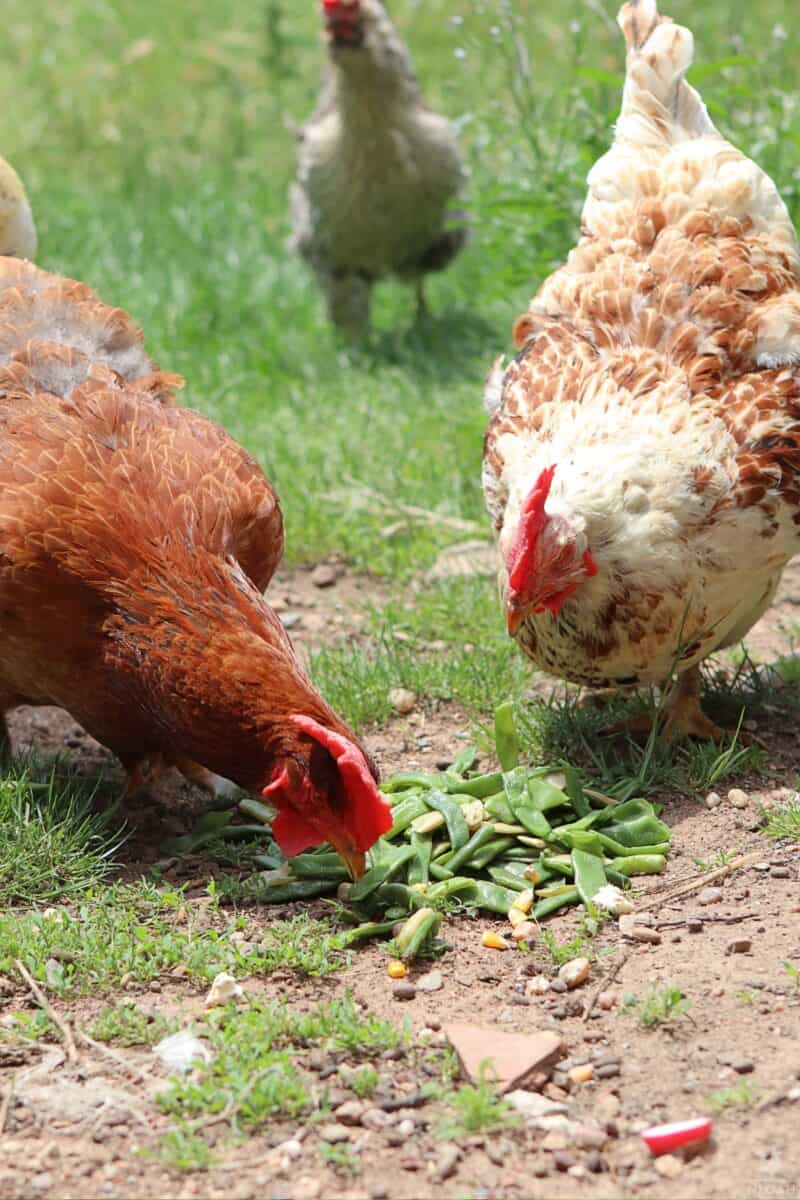
Commercial chicken feed was not invented until roughly 1910 even though poultry birds have existed since the beginning of time. Until the industrialization of the chicken industry, farmers and homesteaders simply allowed the birds to feed themselves to provide the bulk of their diet.
The natural foraging instincts of chickens were supplemented with a few handfuls of corn, and garden or kitchen scraps during the winter months.
This foraging for free food not only worked well for centuries, but helped keep the garden and yard free from destructive insects year-round.
During the winter, the chickens would peck the ground to find larvae from insects to consume – preventing them from reaching the pupae or maturity stage… where the garden ravaging begins.
It was not until the early 1900s that chickens were being kept on what have become known as “factory farms” where enhanced egg production and weight gain in a short amount of time were expected.
Commercially manufactured chicken feeds started hitting the market to not only facilitate year round-egg and chick production by poultry birds but also to allow folks who lived outside of the shrinking rural regions of America to also keep chickens for personal use and profit.
We can harken back to the days of old and allow our chickens to feed themselves for free – while infusing more of a natural and protein-rich diet onto the flock in the process.
Suburban and even urban homesteaders can also adopt the clever and free or cheap chicken feeding ideas into their husbandry efforts if they use their yard space wisely, and make or buy portable chicken hoop runs or small chicken tractors with long handles that resemble rickshaws and can be moved about easily by the keepers.
Here’s a quick table with all my ideas, before we talk about each of them in detail…
| Compost Pile | Sunflowers |
| Garden Waste | Garden Ranging |
| Eggshells | Sprouts |
| Cover Crops | Chicken Garden Rows |
| Perennial Crops | Jerusalem Artichokes |
| Grow Boxes | Duckweed |
| Grow Herbs | Butcher Waste |
| Worm Farming | Market Scraps |
| Maggot Buckets | Dairy |
| Roots | Rice |
#1. Compost Pile
Start a compost pile inside of the chicken run or in the flock free-ranging area so the birds can peck and eat the numerous bugs living in the pile and on the kitchen and garden scraps also tossed into the pile.
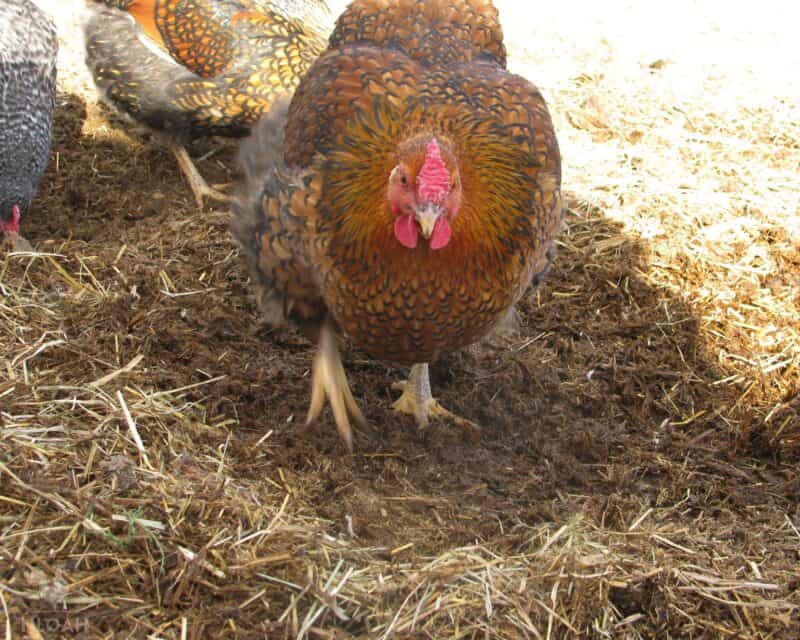
You will not need to worry about turning the compost pile, the movement of the chickens will take care of that chore for you.
#2. Sunflowers
Plant a beautiful row of sunflowers on your homestead, and allow the birds to not only eat the healthy seed heads they produce, but munch on the thick stem and leaves as well. Simply allow the sunflower heads and other plant matter that can be sun-dried to be saved for use as a winter flock treat.
#3. Garden Waste
Gather the corn stalks, unused plant parts, and pulled weeds from the garden that you are not keeping for edible or medicinal use, and toss them into the chicken run.
The poultry birds will rush into those fresh or dried greens like a child does to ice cream. Even so-called weeds can be a rich source of vital nutrients that will fulfill not only the dietary needs of the birds, but may also boost eggshell strength and the immune system of the small livestock.
#4. Garden Ranging
Before the planting season begins, turn the chicken flock loose in the garden to dine upon all the bugs lying in wait beneath the surface until the crop plants are in place.
Disclosure: if you visit an external link in this post and make a purchase, I may earn a commission. Read my full earnings disclosure here.
Once the growing season starts, use portable chicken run hoops made out of hardware cloth or chicken wire – or a chicken tractor, so the birds can move through the rows and garden border area to continue their quest to find and eat bugs.
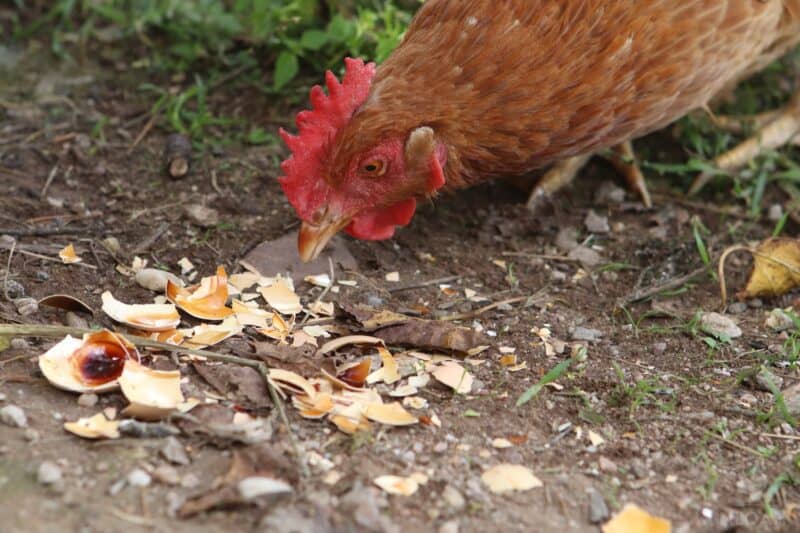
#5. Eggshells
Save the eggshells after cooking your farm fresh eggs, and feed them back to the flock.
The crushed eggshells will infuse more calcium into the birds’ diet and can help hens develop thicker and more durable eggshells. This is especially helpful during the winter months.
#6. Sprouts
Snag up all the cheap vegetable seed packets you can find at the end of the growing season, and use them to cultivate sprouts to feed your flock during the winter months when their foraging options are limited.
#7. Cover Crops
Put your fall and early spring cover crops to work for you once again by allowing your poultry bird flocks to patrol them for bugs while consuming the alfalfa, oats, clover, sorghum, soybeans, buckwheat, barley, and red winter wheat as part of their daily foraging meal consumption.
If you do not want to plant extra cover crops to be enjoyed by your flocks, simply use the chicken tractor or portable chicken hoop run options to prevent them from eating anything but the insects living next to them.
#8. Chicken Garden Rows
Add some extra rows to your garden to serve the sole purpose of creating feed for chickens, or plant some garden crops in the ground near the coop or in container pots.
Recommended crops to plant for chickens include all varieties of squash, pumpkins, lentils, zucchini, Swiss chard, cucumbers, broccoli, and lettuce.
#9. Perennial Crops
Cultivate perennial plants either just for the chickens to eat or as an extension to edible, medicinal, or ornamental plantings you are already engaged in.
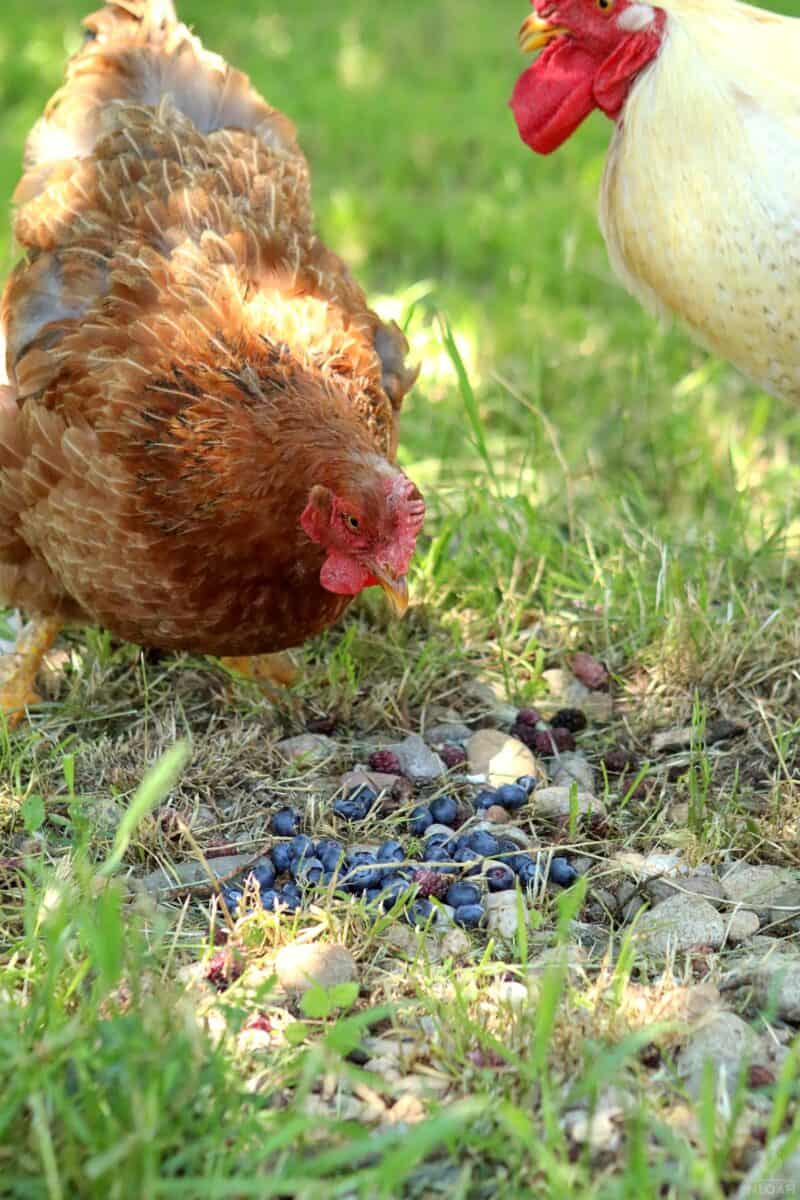
Perennials recommended for chicken consumption include blueberries, elderberries, pea shrub, honeysuckle, mulberries, blackberries, black raspberries, olives, grapes, buckthorn, chicory, chokecherry, huckleberries, currants, jewelweed, and gooseberries.
#10. Jerusalem Artichokes
This member of the sunflower family is also highly attractive to poultry birds, The entire plant can be tossed into the chicken run after you harvest the tubers at the end of fall – and the tubers themselves will be highly welcomed by the chickens if you harvested enough to share.
A single Jerusalem artichoke (or sunchoke) plant is capable of producing 200 pounds of food per growing season.
#11. Grow Boxes
If you are simply staunchly opposed to any type of free-ranging or do not have the space or garden area to do so as a primary source of food, consider using grow boxes.
You can cultivate sprouts, lettuce, carrots, and similar crops outdoors or indoors year-round and then rotate them in and out of the chicken run on a regular basis to provide a healthy, natural, and inexpensive type of “chicken feed” to your poultry birds.
#12. Duckweed
This aquatic plant will be highly enjoyed by your chickens, turkeys, and guineas, and will absolutely be loved by your ducks. Duckweed grows on or just beneath the surface or ponds or slow moving water.
It is a hardy and quick grower will cut down on algae, is nutrient-rich, and can even be grown on baby pools and decorative garden ponds.
#13. Grow Herbs
There are darn few herbs chickens will not eat. Cultivating a chicken herb garden or expanding on your current herb garden planters is another great way to provide free or cheap chicken feed.
Also, the nutrients and possible healing properties in herbs may also keep your flock in optimal health. Suggested chicken herbs to grow oregano, thyme, rosemary, basil, chamomile, amaranth, lemon balm, sage, yarrow, plantain, mullein, bee balm, purslane, comfrey, dill, and calendula.
This chicken feed idea will offer a bounty of protein into the birds’ diet and can be a year-round source of “feed” for the poultry birds.
#14. Butcher Waste
If you butcher livestock on your homestead, know someone who does, or can develop a relationship with a local butcher, use the meat scraps left over after an animal is harvested to feed your chickens and other poultry birds.
#15. Worm Farming
“Grow” mealworms, red worms, and other easy to establish varieties to provide a free and steady flow of protein to your chicken flock.
#16. Market Scraps
Check with the folks at your local supermarket and farmer’s market about getting the scraps from produce that would otherwise be thrown into the dumpster because they were blemished, going out of date, or just do not sell.
You might be really lucky and get the cast offs for free, but may need to pay a small amount – far less than the cost of a bag of commercial chicken feed, to garner the goodies for your birds.
#17. Maggot Buckets
Toss all of the red meat scraps you cannot use in your compost pile into a bucket and wait for the maggots to appear.
This free chicken feed idea will offer a bounty of protein into the birds’ diet and can be a year-round source of “feed” for the poultry birds.
#18. Dairy
If you make your own cheese from the milk provided by the goats and cows on your homestead, the chickens will think it is Christmas day if you share the leftover whey, or even soured milk with them.
#19. Roots
Plant some roots for the chickens to help them boost their carbohydrate intake – which is essential to both the quality and quantity of laid eggs. Roots suggested to cultivate for chickens include yams, ginger, sweet potatoes, radishes, garlic (small amounts), and turnips.
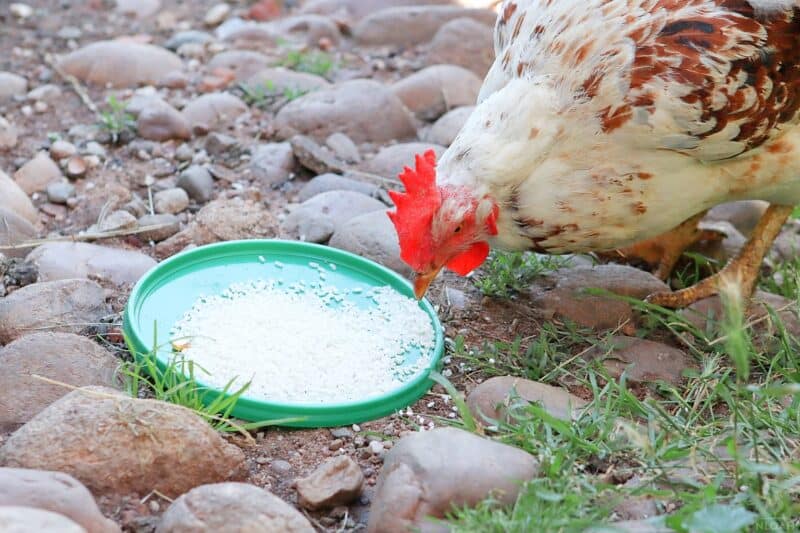
#20. Rice
Use 5-gallon buckets or baby pools to grow rice if you do not have a natural area on your homestead conducive to cultivating rice. The chickens and other poultry birds can eat cooked white or brown rice but should not be fed uncooked rice.
Wrap-Up
There are many ways to feed your chickens without buying feed or nearly free without reducing the amount of nutrients they need to remain healthy, put on weight, and lay magnificent eggs.
In fact, adopting an old-fashioned and traditional way of feeding chickens could actually boost their nutrient intake and overall health.
Raising chickens in a healthy and affordable manner allows homesteaders to collect eggs cheaper than they can be purchased on grocery store shelves.
If you rely solely or primarily on commercially manufactured chicken feed when raising poultry birds, those eggs being laid in your chicken coop are likely costing you double what the cartons of eggs from factory farms sell for at the corner grocery store.
Keep a log of your natural chicken feeding efforts to better gauge how they are working. The log should include the time and any money spent establishing your new feeding style, egg production specifics, healthy chick yield, mature bird health, and butcher weight of meat birds.
Reviewing the records will help you fine-tune the free chicken feed plan, adapting it as needed to further your flock husbandry efforts.

Tara lives on a 56 acres farm in the Appalachian Mountains, where she faces homesteading and farming challenges every single day, raising chickens, goats, horses, and tons of vegetables. She’s an expert in all sorts of homesteading skills such as hide tanning, doll making, tree tapping, and many more.
